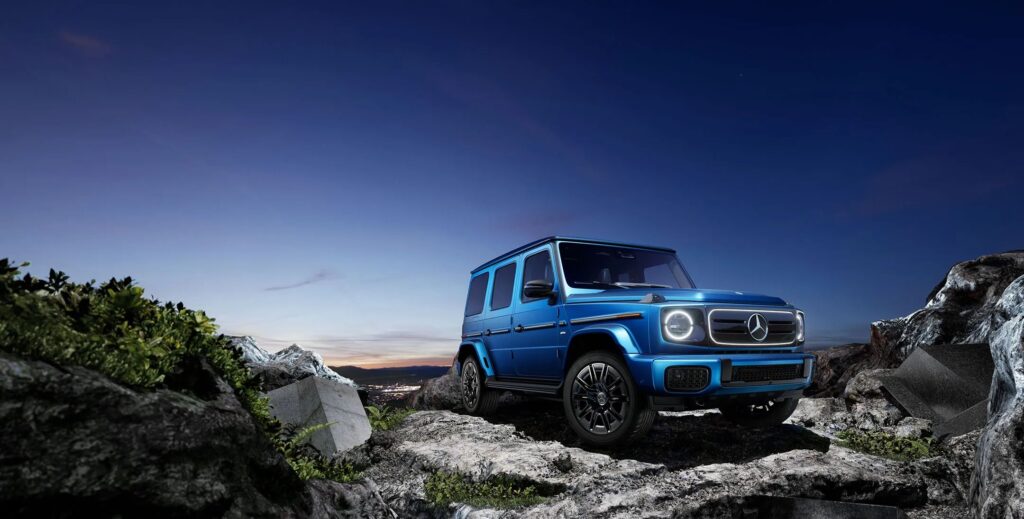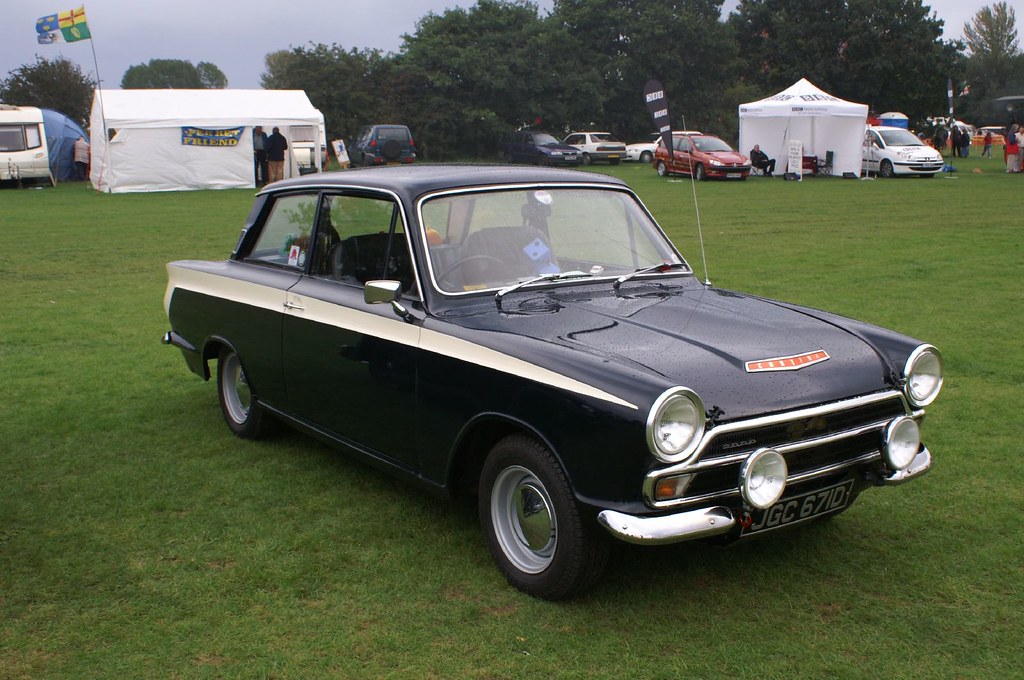
Classic cars hold a unique allure, embodying a blend of historical craftsmanship and timeless design that continues to captivate enthusiasts. In an automotive landscape increasingly dominated by high-tech, electric-powered vehicles, these vintage machines are not just relics of the past. Instead, they are experiencing a monumental resurgence, proving that the heart of motoring passion can beat just as strongly with an electric pulse.
The electric vehicle (EV) revolution has undoubtedly reshaped the auto industry, presenting eco-friendly alternatives to traditional internal combustion engines. Far from relegating classic cars to static museum displays, this technological shift has opened an exciting new chapter. Many historic marques are now embracing electrification, melding their celebrated aesthetics and heritage with cutting-edge performance, thereby redefining classic car ownership for the 21st century.
This exciting trend sees car brands delving deep into their illustrious archives, dusting off beloved names from yesteryear, and reimagining them as modern electric vehicles. From legendary muscle cars to rugged off-roaders and charming city cruisers, these revivals aim to tempt a new generation of drivers while satisfying the nostalgic desires of long-time enthusiasts. Join us as we explore the first seven of 15 classic car names that are making a monumental electric comeback.
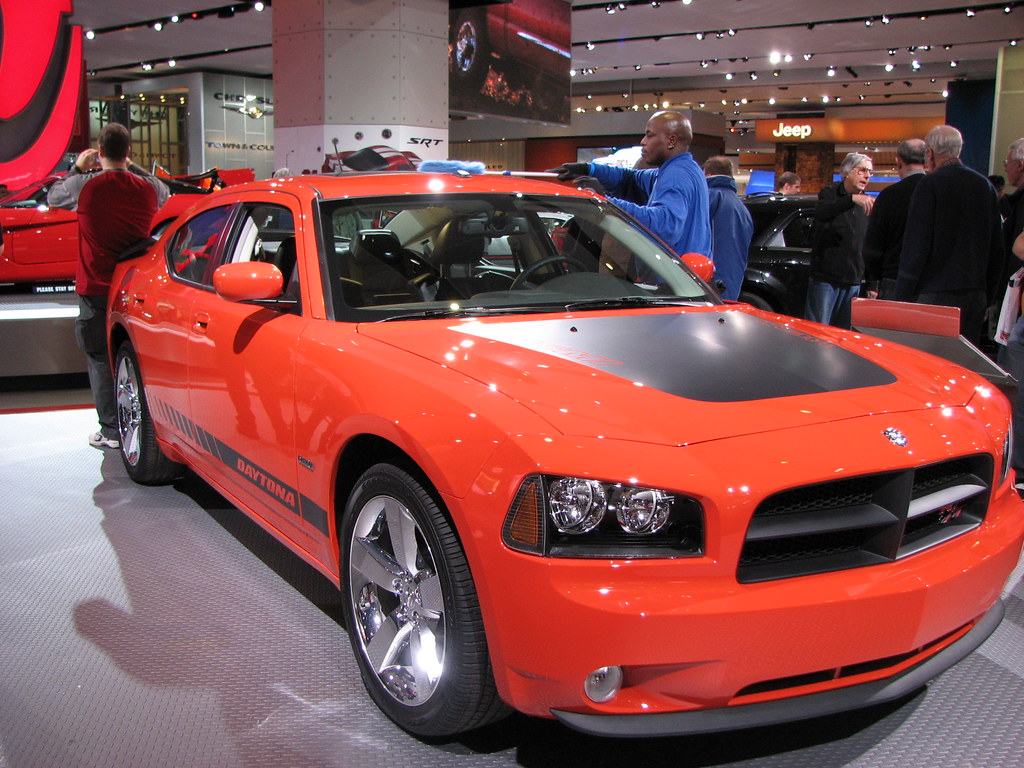
1. **Dodge Charger Daytona**The Dodge Charger nameplate is synonymous with American muscle, celebrated for its raw power and iconic presence. For decades, models like the legendary Hellcat defined high-octane performance, embodying an era of roaring V8s and tire-shredding torque. It was a significant moment in 2023 when these gas-powered performance Chargers were discontinued, leaving a void that many enthusiasts feared could never be truly filled.
Dodge’s audacious move to position the electric Charger Daytona as the direct replacement for these old-school titans was met with considerable skepticism. While the new electric Charger promised impressive capabilities both on the track and the road, the idea of an electric car as a worthy successor to the Hellcat didn’t immediately resonate with purists. This initial hesitation from buyers contributed to a challenging market entry, seeing it unfortunately rank as the worst-selling car of 2024.
The lack of immediate demand from enthusiasts has prompted Dodge to swiftly adapt its strategy, rushing internal combustion engine (ICE) Charger models into production earlier than initially planned. Company bosses have committed to launching a gas-powered six-cylinder Charger in the second half of 2025, a clear response to market feedback. Furthermore, rumors of a potential Hemi V8 version eventually making a comeback continue to swirl, though nothing concrete has been confirmed.
Despite the rocky start, Dodge remains committed to its electric transition, planning to build both electric and gas-powered variants simultaneously. This dual-powertrain approach highlights the brand’s efforts to navigate the evolving automotive landscape. The journey hasn’t been without its hurdles, including potential impacts from current U.S. tariffs on Canadian-made vehicles, underscoring the complexities of bringing such an ambitious electric muscle car to market.
Car Model Information: 2022 RAM 1500 TRX
Name: Dodge Charger Daytona
Caption: 1969 Dodge Charger Daytona
Manufacturer: Dodge
Production: 1969–1970,2006–2009,2013,2017–2023
Class: Muscle car
Layout: FR layout
Categories: 1960s cars, 1970s cars, 2000s cars, All articles needing additional references, All articles with unsourced statements
Summary: Dodge produced three separate models with the name Dodge Charger Daytona, all of which were modified Dodge Chargers. The name was taken from Daytona Beach, Florida, which was an early center for auto racing and still hosts the Daytona 500, NASCAR’s premier event. The original Dodge Charger Daytona was designed to beat the competition in NASCAR racing. It was the first NASCAR vehicle to reach 200 miles per hour, which was a major milestone at the time.
Get more information about: Dodge Charger Daytona
Buying a high-performing used car >>>
Brand: Dodge Model: Charger Daytona
Price: $75,887 Mileage: 27,561 mi.
Read more about: Shift into Fun: Our Expert Picks for the 11 Best Affordable Manual Transmission Sports Cars That Still Thrill on a Budget
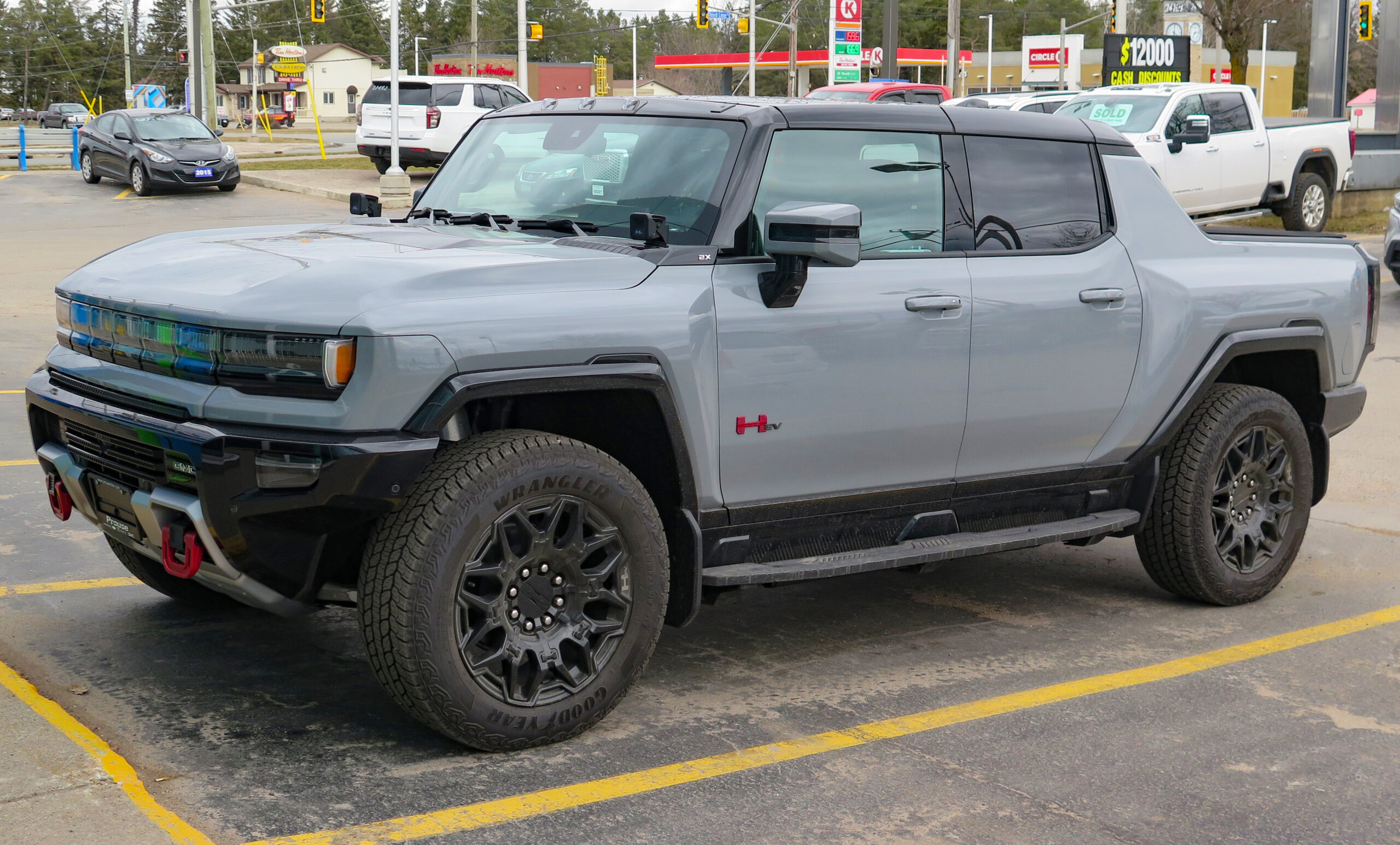
2. **GMC Hummer EV**The Hummer nameplate carries an unmistakable legacy, originating with the military’s AM General-built HMMWV in 1983. This robust machine quickly became an instantly recognizable symbol of American military might, capturing the public’s imagination. Capitalizing on this powerful image, AM General launched a civilian version in 1992, paving the way for General Motors to acquire the brand seven years later, subsequently introducing the H2 and H3 models to a broader consumer base.
GM’s bankruptcy in 2009 led to the unfortunate axing of the entire Hummer lineup, consigning the brand to the archives. However, in 2020, GM announced a dramatic resurrection of the marque, but with a significant twist: the new Hummer would be an all-electric affair. This bold move saw the nameplate return not only as a formidable pickup truck but also in an SUV form, known as the Hummer EV SUV.
While it decisively shed its gas-guzzling combustion engine, the revived Hummer enthusiastically retained the core essence of its predecessors. It remains unapologetically oversized, impressively capable off-road, and possesses a hilariously powerful demeanor. Its staggering 1,000-hp output comfortably outpaces attention-grabbing rivals like the Cybertruck, making a clear statement about its performance credentials.
Unique features such as the “Crab Walk mode” add a fun, albeit somewhat impractical, novelty to the driving experience, reflecting the Hummer’s continued focus on spectacle. The Hummer EV stands as a testament to how electrification can amplify a vehicle’s inherent character, translating its iconic ruggedness and dominance into a powerful, zero-emission package, albeit one still designed for commanding attention rather than subtle utility.
Car Model Information: 2023 Hyundai SANTA FE Calligraphy
Name: GMC Hummer EV
Caption: 2024 GMC Hummer EV3X (SUV)
Designer: Rick Scheer (director of design)
Powerout: 1000 hp
Abbr: on (SUV)
Battery: Ultium
Motor: Ultium Drive
ElectricRange: convert
Height: 79.1 in
Width: 86.46 in
Length: 196.8 in
Wheelbase: 126.7 in
Weight: Convert
Transmission: Single-speed
Related: Chevrolet Silverado EV,Cadillac Escalade IQ
Platform: General Motors BT1 platform
Predecessor: Hummer H2
Layout: Unbulleted list
BodyStyle: pickup truck
Class: Pickup_truck#Full-size_pickup_truck,Full-size SUV
Assembly: Detroit, Michigan
ModelYears: 2022–present
Production: November 2021 – present
Manufacturer: GMC (marque)
Sp: us
Charging: unbulleted list
Categories: All Wikipedia articles written in American English, All articles with unsourced statements, Articles with short description, Articles with trivia sections from November 2023, Articles with unsourced statements from April 2023
Summary: The GMC Hummer EV (badged as HEV) is a line of battery electric heavy-duty vehicles produced by General Motors since 2021, and sold under the GMC mark. The Hummer EV is offered in two variants: a pickup truck and a sport utility vehicle (SUV), unveiled in October 2020 and April 2021 respectively.
Weighing roughly 10,000 pounds (4,500 kg), the Hummer EV is among the heaviest consumer automobiles currently sold in the United States. Its size, mass, and acceleration have led to concerns regarding the danger it poses to other users on the road in the event of a collision, as well as its efficiency and environmental affects.
Get more information about: GMC Hummer EV
Buying a high-performing used car >>>
Brand: GMC Model: Hummer EV
Price: $31,989 Mileage: 21,971 mi.
Read more about: The Ultimate Throwback: 14 Cars That Every Grandma (And Probably Your Mom) Drove

3. **Scout Traveler (Scout Motors)**In the early 1960s, the automotive market was ripe for innovation, and the original International Harvester Scout, launched in 1961, perfectly filled that niche. It pioneered the concept of a comfortable, versatile work vehicle, helping to popularize the body style that would eventually become known as the SUV. Its influence was so profound that Ford reportedly drew inspiration from the Scout’s design when developing its legendary Bronco.
Despite operating with a smaller and less-funded design and engineering team compared to rivals like Ford, International Harvester consistently refined the Scout’s design throughout the 1960s. The second-generation model, the Scout II, debuted in 1971 and continued production for nearly a decade until financial woes forced IH to cease Scout production in 1980, eventually leading to the brand’s dormancy as IH was split and sold off.
The legacy of the Scout lay dormant for over four decades until the Volkswagen Group acquired the rights to the revered name in 2021. Just a year later, Scout was dramatically revived as a VW-backed startup, with an ambitious mission: to build a new line of all-electric trucks and SUVs. This resurgence signifies a strategic move to leverage a historic American nameplate for the booming electric utility vehicle market.
True to its heritage, the new electric vehicle lineup will revive two historic model names from Scout’s past: the Traveler, an SUV, and the Terra, a pickup. Production versions of both are expected to launch as soon as 2027. VW’s considerable financial backing is a crucial accelerator, enabling Scout to expedite both the vehicle design process and the construction of its dedicated South Carolina manufacturing facility, promising a robust and versatile electric future for the storied brand.
Car Model Information: 2022 RAM 1500 TRX
Name: Scout Motors Inc.
Logo: Scout Mark 2025.svg
LogoSize: 200
Type: Subsidiary
Industry: automotive industry
Foundation: [object Object]
HqLocationCity: Not yet established
HqLocationCountry: United States
KeyPeople: Scott Keogh (CEO)
AreaServed: United States, Canada
Products: Electric vehicle
Owner: Volkswagen Group
Website: https://scoutmotors.com/|scoutmotors.com
Predecessor: International Harvester
Categories: All articles with unsourced statements, American companies established in 2022, Articles with short description, Articles with unsourced statements from May 2025, Battery electric vehicle manufacturers
Summary: Scout Motors Inc. is an American division of German automotive manufacturer Volkswagen Group and a member of the Volkswagen Group companies. Volkswagen AG obtained the Scout brand after acquiring American truck manufacturer International Motors (previously Navistar) in 2021, and the Scout brand was relaunched in 2022.
Scout Motors was established to manufacture and market off-road electric vehicles. It is a U.S.-based operation and independent company, managed separately from Volkswagen AG with its own executive team and board members. The company does not have an official headquarters, but has operations located in South Carolina, Michigan, Virginia, and California.
Get more information about: Scout Motors
Buying a high-performing used car >>>
Brand: Scout Motors Model: Scout Traveler
Price: $75,887 Mileage: 27,561 mi.
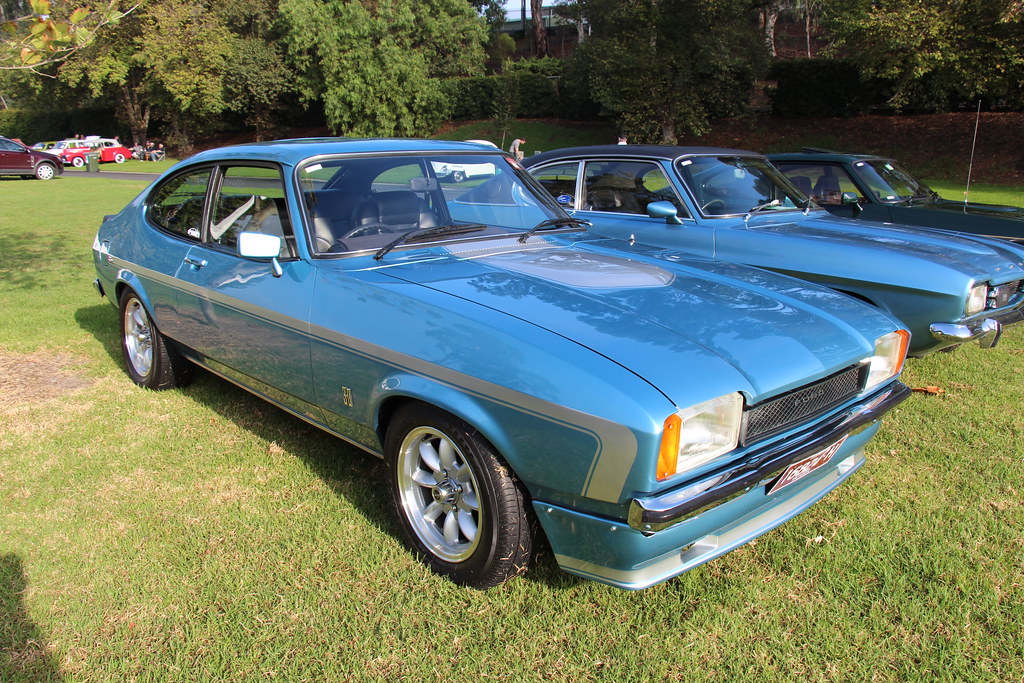
4. **Ford Capri**The Ford Capri holds a legendary status in Europe, where it was essentially Ford of Europe’s spirited answer to the iconic Mustang. Designed specifically to appeal to European tastes, this pony car proved immensely popular, with nearly two million examples sold across its three generations. Its production commenced in 1969, with subsequent generations arriving in 1974 and 1978, the latter surviving until 1986.
By the time of its discontinuation, Ford of Europe’s modest development budget had caught up with the Capri. The car had lost its competitive edge, struggling to keep pace with evolving buyer preferences and performance expectations, leading many to seek their automotive thrills elsewhere. Despite this, the Capri has enjoyed enduring popularity in the decades since its retirement, becoming a regular fixture at classic car shows and fostering enthusiastic owners’ clubs across the continent.
Ford has now reinvented this beloved nameplate, bringing it back as an electric crossover, a significant departure from its original two-door coupé form. Intriguingly, unlike the Mustang, Ford no longer offers an ICE pony car variant; the only new Capri available today is the electric model. This strategic shift highlights Ford’s commitment to its electric future, leveraging nostalgic appeal to introduce new EV offerings.
However, Ford seems to have overestimated initial buyer demand for the electric Capri. In late 2024, the company announced scaled-back production plans for both the Capri and its related Explorer model due to slower-than-anticipated sales. While the new £42,000 all-electric SUV features a coupé-style roof and decent driving dynamics, evoking some excitement, its demographic has shifted. As one observer noted, it is now more likely to be driven by “IT professionals and accountants” rather than harkening back to the “macho” image once associated with its 70s TV show appearances.
Car Model Information: 2021 Ford Mustang GT
Caption: 1978 Ford Capri Mk3 2.0L
Name: Ford Capri
Manufacturer: Ford of Europe
Production: November 1968 – December 1986
Designer: Philip T. Clark
Class: coupé
Related: Ford Cortina,Ford Taunus TC
Successor: Ford Probe,Ford Puma (sport compact)
Categories: 1960s cars, 1970s cars, 1980s cars, All Wikipedia articles written in British English, All articles with incomplete citations
Summary: The Ford Capri is a fastback coupé built by Ford of Europe and designed by Philip T. Clark, who had been involved in the design of the Ford Mustang. It used the mechanical components from the Mk2 Ford Cortina and was intended as the European equivalent of the Ford Mustang. The Capri went on to be highly successful for Ford, selling nearly 1.9 million units in its lifetime. A wide variety of engines were used in the car throughout its production lifespan, which included the Essex and Cologne V6 at the top of the range, while the Kent straight-four and Taunus V4 engines were used in lower-specification models. Although the Capri was not officially replaced, the second-generation Probe was effectively its replacement after the later car’s introduction to the European market in 1994.
Get more information about: Ford Capri
Buying a high-performing used car >>>
Brand: Ford Model: Capri
Price: $36,993 Mileage: 18,085 mi.
Read more about: The Investment Fleet: Which 12 Vintage Chevys From the ’60s Just Skyrocketed in Value?
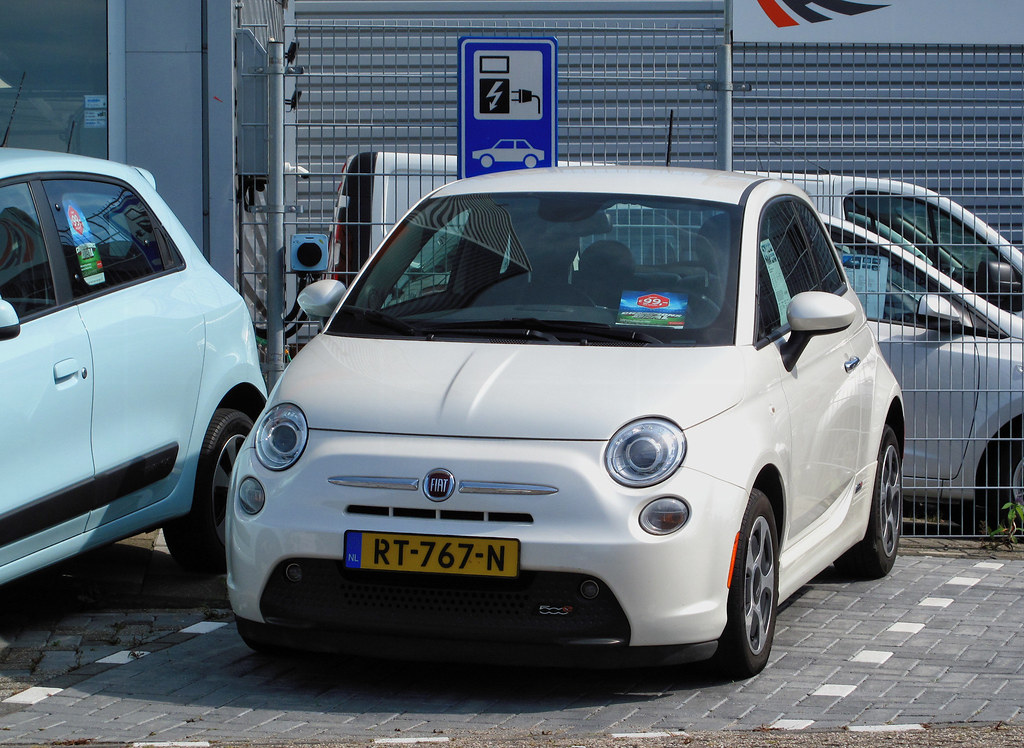
5. **Fiat 500e**The Fiat 500 has long been a beloved icon, renowned for its charming Italian design and urban agility. Globally popular, it catered extensively to its core European market, and also found its way to various other regions, including the U.S. where it was introduced for the 2011 model year. Fiat embraced the electric transition early on for this model, choosing to discontinue the gas-powered 500 and replace it with the all-electric 500e.
While the 500e maintained its adorable aesthetic and city-friendly dimensions, its journey in the U.S. market has been particularly challenging, where it has proven to be an extremely slow seller. This unexpectedly low demand, not just in America but in other markets, prompted Fiat to rethink its electric-only strategy for the beloved city car. The brand faced the dilemma of boosting sales and ensuring steady production for its Italian factory workers.
In a pragmatic and innovative move, Fiat has re-engineered the all-electric 500e platform to accommodate a gas engine, augmented with a small hybrid battery. This strategic pivot allows for a more flexible offering, catering to customers who may still prefer or require a combustion-powered option. The first pre-production examples of this hybrid 500 were reportedly completed in May 2025, with mass production slated to commence by the end of the year.
The electric 500e will continue to be available alongside its new hybrid sibling, reflecting Fiat’s dual approach to market demands. The brand’s hope is that the reintroduction of a combustion-powered 500 will sustain healthy sales figures and manufacturing activity until buyer demand for pure EVs experiences a more significant surge in its core markets. This decision underscores the dynamic challenges and adaptations required in the ongoing transition to widespread electric vehicle adoption.
Car Model Information: 2024 FIAT 500e Base
Name: Fiat 500e (New 500)
Manufacturer: Fiat
ModelCode: 332
Production: February 2020–present
ModelYears: 2020–present
Assembly: Fiat Mirafiori,Turin
Designer: Lorenzo Battisti, Dario Pellegrino at Centro Stile Fiat
Class: City car
BodyStyle: hatchback,cabriolet,4-door hatchback
Platform: STLA City
Motor: GKN Automotive G400 IPMS interior permanent-magnet synchronous motor
Battery: Lithium-ion battery
Powerout: {{cvt,70,kW,PS hp,0
ElectricRange: {{cvt,185,km,0,Worldwide harmonized Light vehicles Test Procedure
Charging: DC:,50nbspkW (24nbspkWh battery),85nbspkW (42nbspkWh battery),400nbspV 3-Phase AC: 11nbspkW,230nbspV AC: 6.6nbspkW,120nbspV AC: 3.3nbspkW
Wheelbase: cvt
Length: cvt
Width: cvt
Height: cvt
Weight: cvt
Predecessor: Fiat 500e (2013)
Sp: uk
Categories: 2020s cars, All Wikipedia articles written in British English with Oxford spelling, All articles with bare URLs for citations, Articles with bare URLs for citations from August 2025, Articles with short description
Summary: The Fiat 500e (project 332), also known as the 500 elettrica or New 500 is a hybrid or battery-electric car by Italian manufacturer Fiat as the third generation of its 500 city cars, following the original 500 (1957–1975) and second-generation 500 (2007–2024). The third-generation 500e is manufactured at the Mirafiori plant in Turin, Italy, starting in 2020, and was sold alongside the second-generation 500, which was manufactured in Tychy, Poland until 2024. It was scheduled to be launched at the Geneva Motor Show but that event was canceled due to the COVID-19 pandemic; it was launched on 4 March 2020 in Milan.
The 500e has a 320 km (199 mi) range on the European WLTP combined test cycle, and achieves 400 km (249 mi) on that test’s urban cycle, which is generally favourable toward electric vehicles (EVs). Most versions of the car are powered by an 87 kW (117 hp) electric traction motor, fed by a 42 kWh lithium-ion battery pack.
Get more information about: Fiat 500e
Buying a high-performing used car >>>
Brand: Fiat Model: 500e
Price: $21,891 Mileage: 1,572 mi.
Read more about: Stellantis Navigates a Portfolio Reckoning: Which of its 8 Brands Face the Chopping Block by 2026?
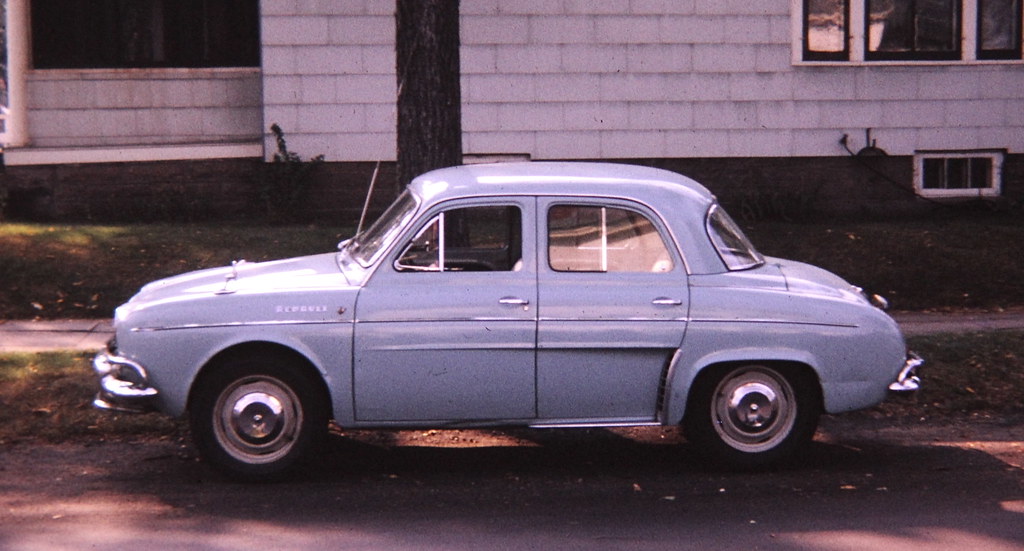
6. **Renault 5**When the original Renault 5 launched in 1973, it arrived amidst a global energy crisis, offering a practical and efficient solution for European drivers. This soft-suspension, smooth-riding hatchback, built in France, quickly captured the hearts of millions across Europe, selling over nine million examples before it was effectively replaced by the Clio in the early 1990s. In the U.S., where it was briefly branded ‘Le Car’, it achieved only modest sales and was discontinued less than a decade later, struggling to appeal to American tastes.
Despite its brief U.S. stint, the Renault 5 has since become a sought-after classic in the States, particularly its rallying homologation special, the Renault 5 Turbo of the ’80s, which consistently draws high levels of interest from American collectors, with pristine examples fetching six-figure sums at auction. This enduring cult appeal underscores the car’s innovative design and performance prowess.
Fast forward to today, and Renault’s revival of its classic 5 city car as an EV has been remarkably successful. Since its recent launch, the new Renault 5 has quickly ascended to become one of the most popular EVs in Europe, earning the prestigious Car of the Year award from a pan-European jury of journalists in 2025. This modern iteration is a five-seat family car powered by batteries, praised for being brilliant to drive and offering a competitive range of up to 190 miles on a single charge.
Despite putting up billboards displaying the 5 in New York in 2024, Renault has no immediate plans for a full return to the American market, though its performance division, Alpine, is rumored to make a comeback later in the decade. The new 5’s modest 148 horsepower output and roughly 250-mile range are not ideally suited for America’s high-speed highways. However, ‘Le Nouveau Car’ truly looks fantastic, packing a fun factor that includes charming retro trim and even a quirky baguette carrier, all offered at an exceptional starting price of just under £23,000.
Read more about: From Silver Screen to Racetrack: 14 Famous Actors Who Mastered Professional Racing
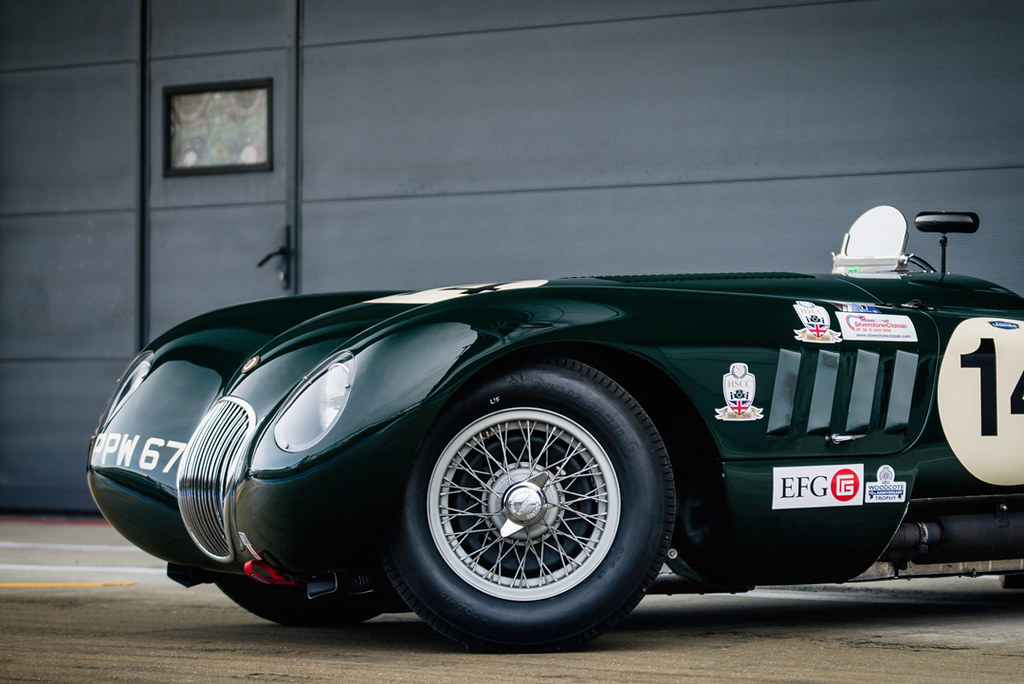
7. **Jaguar Type 00**Jaguar, a brand steeped in a rich heritage of luxurious sedans and thrilling sports cars, is embarking on one of the most radical transformations in the automotive industry. The brand is in the process of systematically discontinuing its entire previous lineup: the XE and XF sedans, the F-Type sports car, and the E-Pace and I-Pace crossovers all ended production by late 2024, with the F-Pace SUV set to follow in early 2026. This aggressive strategy aims to clear the decks for an entirely new electric future.
Everything in Jaguar’s portfolio is being replaced by an all-new, all-electric lineup, a move that has proven to be endlessly controversial among loyalists and the broader automotive community. The recently unveiled Jaguar Type 00 EV, for example, has garnered a polarized reception; while some are beginning to come around to its avant-garde design and direction, others have already written off this historic rebrand as a potential disaster, lamenting the loss of familiar forms and powertrains.
Individual opinions might remain deeply divided, but one aspect of this rebrand is inarguable: it has generated a wealth of publicity for Jaguar. This bold, all-or-nothing approach has effectively imprinted the brand’s new, electric-only direction onto the minds of the car-buying public in a way that none of its previous generation models could achieve. It’s a high-stakes gamble for visibility and brand perception in a crowded EV market.
However, the ultimate success of this audacious strategy still hangs in the balance. Whether this substantial publicity translates into tangible sales and profitability for the new electric lineup remains to be seen. The Type 00, and the entire new electric family it represents, signifies Jaguar’s definitive and uncompromising commitment to an electric future, charting a course that is as ambitious as it is contentious, all while aiming to preserve the brand’s essence in a completely reinvented form.” , “_words_section1”: “1997
Continuing our journey through the automotive archives, where iconic nameplates are being meticulously re-engineered for an electrifying future, we now shift our focus to eight more classics. These vehicles represent a diverse spectrum of automotive heritage, from beloved sports cars and utilitarian vans to quirky city cars, all united by their modern electric rebirth. We’ll explore their innovative designs, the technological strides made in their resurrection, and how they are navigating the dynamic waters of contemporary market reception, providing a broader perspective on this thrilling, transformative trend.
Car Model Information: 2022 Toyota Tacoma SR5
Name: Jaguar Type 00
Caption: A front view of the Jaguar Type 00 concept car.
Manufacturer: Jaguar Land Rover
Production: concept car
Designer: Gerry McGovern
BodyStyle: coupé
Platform: Jaguar Electric Architecture (JEA)
Transmission: 1 Speed
Wheelbase: [object Object]
Length: [object Object]
Width: [object Object]
Height: [object Object]
Weight: [object Object]
Sp: uk
Doors: 2
Powerout: 956 HP
Range: 456 miles
Type: Coupé Concept
Categories: All Wikipedia articles written in British English, All stub articles, Articles with short description, Cars introduced in 2024, Coupés
Summary: The Jaguar Type 00 is a Jaguar Land Rover concept car officially revealed at Miami Art Week in December 2024.
Get more information about: Jaguar Type 00
Buying a high-performing used car >>>
Brand: Jaguar Model: Type 00
Price: $25,987 Mileage: 57,020 mi.
Read more about: Design God: Chip Foose’s Masterpieces—13 Times Vision Transformed the Automotive World
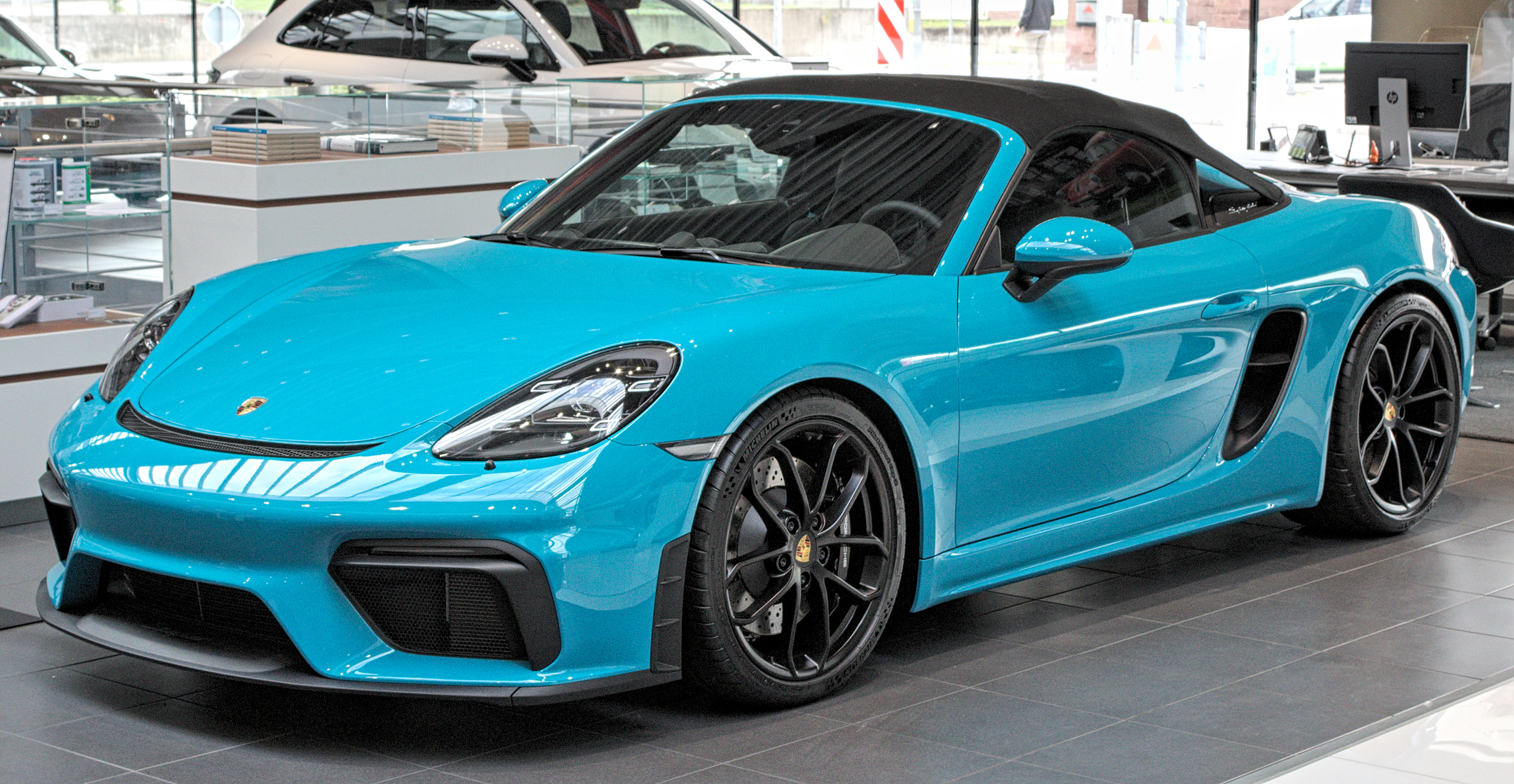
8. **Porsche Cayman/Boxster**For enthusiasts of pure driving dynamics, the Porsche Cayman and Boxster nameplates have long represented the pinnacle of accessible mid-engine sports car performance. Known for their sublime balance, engaging handling, and visceral connection to the road, these sister cars have held a special place in the hearts of purists worldwide. However, the relentless march of automotive regulation, particularly impending combustion car bans and tightening cybersecurity rules across Europe, has led Porsche to make the difficult decision to globally discontinue these beloved models in their traditional form.
This isn’t an end, but rather an exhilarating new chapter. Porsche has confirmed that an all-electric successor is on its way, promising to deliver the brand’s legendary performance with a zero-emission powertrain. While an official unveiling and concrete release date remain under wraps for now, prototype versions of the upcoming electric sports car have already been spotted undergoing rigorous public testing, cloaked in only minimal camouflage, fueling anticipation among the global automotive community.
Crucially, and to the delight of performance enthusiasts, it has been officially confirmed that the new electric Cayman and Boxster will be built upon a dedicated sports car platform. This strategic decision means they will not simply share an architecture with Porsche’s existing electric models, ensuring that the unique characteristics and exceptional driving experience expected from a Porsche sports car are preserved and enhanced in their electric guise. While competition in the electric sports car segment is still nascent, with potential rivals from brands like Alpine and Caterham still in development, the new electric Porsches are poised to set new benchmarks.
For those in the U.S. who still crave the roar of a flat-six, there’s a brief window of opportunity remaining, as new Cayman or Boxster models can still be ordered, though the exact end of production date has yet to be officially confirmed. This transition underscores Porsche’s unwavering commitment to electrifying its core lineup, demonstrating that even the most sacred of internal combustion engines can evolve, promising a future where exhilarating performance and environmental responsibility converge seamlessly.
Car Model Information: 2019 Porsche 718 Boxster
Name: unbulleted list
Caption: Porsche Boxster Spyder (718)
Manufacturer: Porsche
Aka: unbulleted list
Production: unbulleted list
Assembly: unbulleted list
Class: Sports car
BodyStyle: unbulleted list
Related: unbulleted list
Layout: Rear mid-engine, rear-wheel drive layout
Predecessor: Porsche 968
Categories: All Wikipedia articles written in British English, All articles needing additional references, All articles with dead external links, All articles with unsourced statements, Articles needing additional references from August 2025
Summary: The Porsche Boxster and Cayman are mid-engine two-seater sports cars manufactured and marketed by German automobile manufacturer Porsche across four generations—as a two-door, two-seater roadster (Boxster) and a three-door, two-seater fastback coupé (Cayman).
The first generation Boxster was introduced in 1996; the second generation Boxster and the Cayman arrived in late 2005; and the third generation launched in 2012. Since the introduction of the fourth generation in 2016, the two models have been marketed as the Porsche 718 Boxster and Porsche 718 Cayman.
The nameplate Boxster is a portmanteau of boxer, a reference to its flat or boxer engine, and Speedster, a nod to the original Porsche Speedster of the 1950’s. The nameplate Cayman is an alternative spelling of caiman, a member of the alligator family.
In May 2025 Porsche North America confirmed the rumours that global “production for all current 718 Boxster and 718 Cayman variants, including RS models, is scheduled to end in October of” 2025. Porsche CEO Oliver Blume has confirmed future production of full-electric replacements but said they will arrive in the “medium term.”
Get more information about: Porsche Boxster and Cayman
Buying a high-performing used car >>>
Brand: Porsche Model: Cayman/Boxster
Price: $59,900 Mileage: 3,595 mi.
Read more about: 14 Luxury Cars Quietly Going Out of Style: An In-Depth Look at Automotive Evolution

9. **VW ID.Buzz**The Volkswagen ID.Buzz, while technically a fresh nameplate, is unmistakably a deeply cherished modern revival of the iconic VW Type 2 Microbus. This electric van has successfully captured the whimsical spirit of its ancestor, blending a retro-futuristic aesthetic with thoroughly modern electric propulsion. It’s a design masterpiece that effortlessly draws attention, and its comfortable ride, coupled with a remarkably spacious and practical interior, makes it an exceptionally compelling proposition for families and adventurers alike, fulfilling the multi-purpose role that the original pioneered.
While its estimated real-world range of 228 miles might not position it as a cross-country mile-muncher compared to some larger EVs, it’s important to remember the spirit of its predecessor. The original Type 2 was never designed for high-speed highway dominance; instead, it excelled at versatile, unhurried journeys and urban utility. The ID.Buzz carries forward this ethos, prioritizing character, comfort, and functionality over sheer range anxiety for its intended usage scenarios.
This vehicle marks a truly welcome return to the U.S. market for the Volkswagen van, a lineage that had been absent since the T4 generation, sold as the Eurovan, was retired after 2003. Although gas-powered versions, like the T7 Multivan (on sale since 2022), have continued in other international markets, American consumers can now embrace the future of the Volkswagen van. The ID.Buzz began landing in U.S. dealerships for the 2025 model year, inviting a new generation to experience its charm.
The ID.Buzz is more than just an electric vehicle; it’s a cultural statement. It embodies Volkswagen’s commitment to reinterpreting its most beloved icons for the electric age, proving that sustainability can be packaged with immense charm and practical appeal. This revival showcases how deeply rooted automotive heritage can inspire genuinely innovative and relevant modern vehicles, rekindling nostalgia while forging a path forward.
Read more about: The Unexpected Comeback: Why Modern Minivans Are Outpacing Three-Row SUVs for Today’s Families
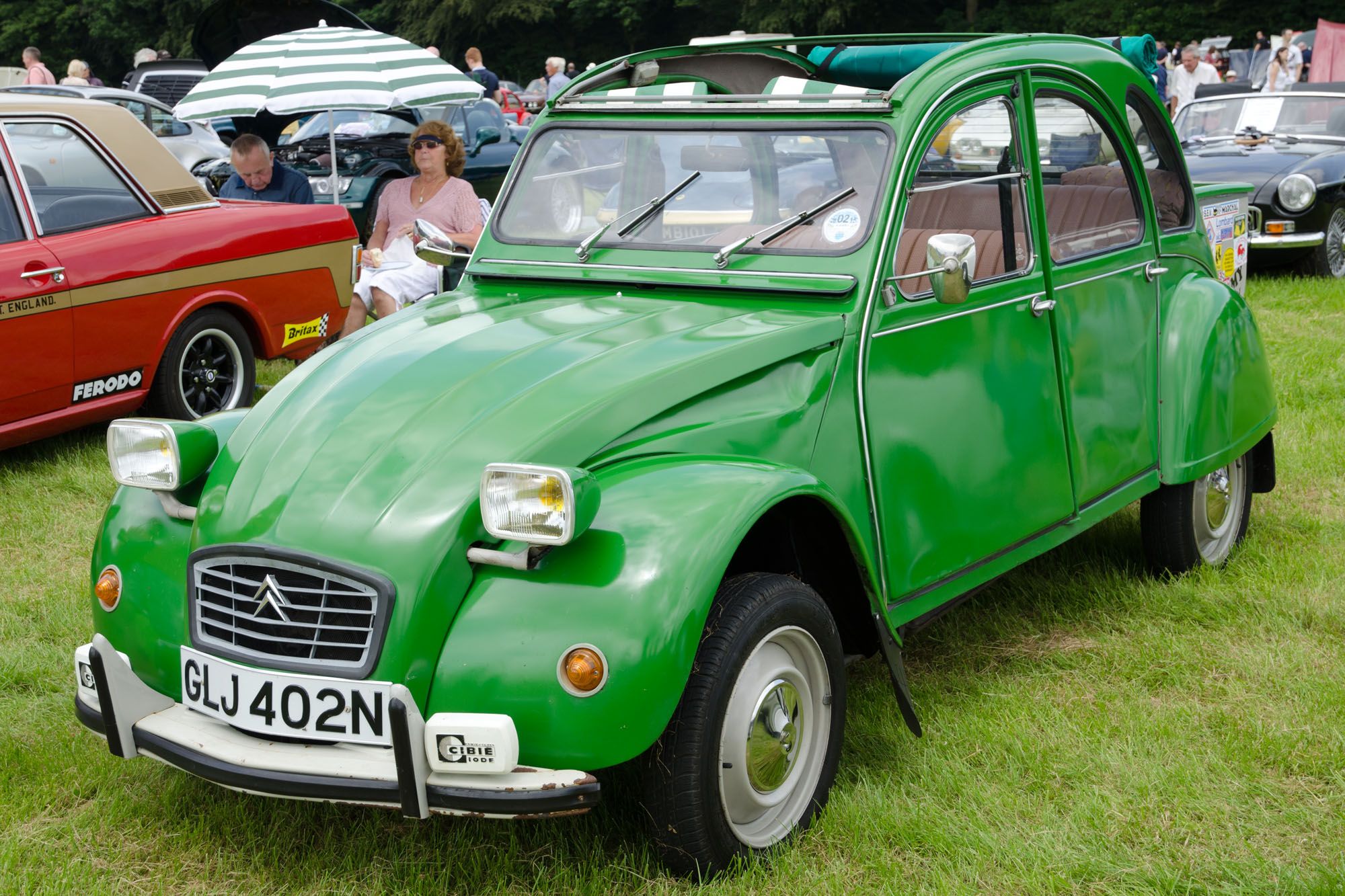
10. **Citroën 2CV**The Citroën 2CV is a vehicle steeped in a fascinating history, initially conceived in post-war France in 1948 as an affordable, utilitarian car designed to mobilize the nation’s population. It famously remained in production in various forms until 1990, with over five million examples rolling off the assembly lines, cementing its status as a French icon. Its distinctive, almost snail-like design and ultra-basic construction were revolutionary for their time, emphasizing practicality and accessibility.
In the U.S., the 2CV had a brief and rather challenging stint, being officially sold for parts of the 1950s and 1960s. However, only around 1,000 examples ever found homes Stateside. Its tiny, underpowered engine and unique aesthetic were fundamentally at odds with the American buyer’s preferences for larger, more powerful vehicles. It’s almost surprising, in hindsight, that any examples managed to sell at all in that market.
Fast forward to today, and exciting reports have emerged from publications like Autocar in January 2025, suggesting that Citroën has ambitious plans to resurrect the 2CV as an electric city car, potentially as soon as 2028. These reports were further validated in March by the brand’s own confirmation that it intends to launch new, heritage-inspired models in the coming years, signalling a deliberate embrace of its storied past to shape its electric future.
While a resurrected 2CV, if it retains its original nameplate, is unlikely to make it stateside and probably won’t be a high-volume seller even in Europe, its purpose is strategic. This electric reimagining forms a crucial part of Citroën’s broader plan to create a series of lower-volume, attention-grabbing models. These unique vehicles are designed to generate significant buzz and draw attention to the brand’s core range of modern crossovers and hatchbacks, leveraging the 2CV’s legendary status to invigorate its contemporary electric identity.
Read more about: See William Shatner’s Incredible 12-Car Collection: From a Morris Minor to a Bugatti Veyron
11. **Nissan Micra/March**Nissan’s compact city car, known globally as the Micra and as the March in its home market of Japan, made its debut in 1982. This agile and efficient vehicle quickly became a global success story, initially manufactured in Japan and Europe. By the time the third-generation Micra launched in 2002, Nissan had expanded its production footprint, establishing local manufacturing facilities in China, Thailand, India, and Mexico, showcasing its widespread appeal and adaptability across diverse markets. By 2011, cumulative global sales for the model had impressively topped six million units.
May 2025 marked a truly radical transformation for this enduring nameplate with the launch of its latest generation. In a bold strategic move, the gas-powered Micra has been completely discontinued, making way for an all-new, all-electric model that proudly sports a retro-inspired design. This dramatic shift is a cornerstone of Nissan’s major push to re-establish its prominence in the burgeoning EV market. It’s a market where Nissan once played a pioneering role with the introduction of the original Leaf, but has since found itself somewhat outpaced by newer, more agile competitors.
In parallel with the Micra’s rebirth, Nissan is also overhauling the Leaf for 2026, equipping it with a longer range and revised styling, preparing it to hit American dealerships soon. While the electric Micra itself will not be making its way to America, its significance cannot be overstated. It plays an equally vital role in revitalizing Nissan’s fortunes in other key international markets, particularly those where small, efficient, and characterful cars continue to enjoy immense popularity. This dual-pronged strategy underscores Nissan’s comprehensive commitment to leading the charge in global EV adoption.
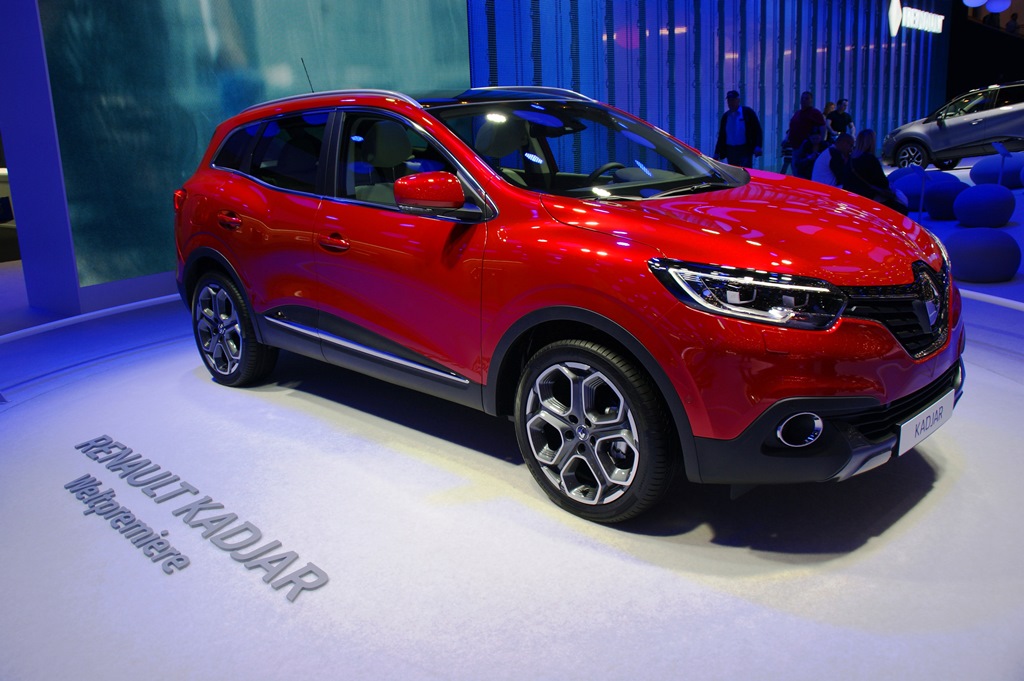
12. **Renault 4**Following the resounding success of the resurrected Renault 5, the French automaker has now also brought back its equally iconic classic 4 nameplate. Fittingly, both new electric models are based on the same innovative platform, leveraging shared engineering to create a cohesive and robust EV lineup. The original Renault 4, launched between 1961 and 1992, was another immensely popular model from the brand’s distinguished back catalog, with over eight million units sold, a testament to its enduring appeal and practical utility.
The original 4’s distinctively boxy hatchback design, though unusual at the time of its release, proved to be an ingenious stroke of engineering. It made the car exceptionally practical for carrying large loads, setting it apart from its similarly sized rivals. This inherent versatility quickly established the 4 as a workhorse, a reliable and indispensable vehicle used by a wide array of workers, from dedicated farmers traversing rugged terrain to efficient airline staff navigating bustling airport grounds.
The new electric Renault 4 offers a compelling blend of similar performance characteristics and dimensions to its electric sibling, the new 5. However, the 4 distinguishes itself with a slightly longer wheelbase, a thoughtful design choice that significantly improves its ability to comfortably accommodate adults in the second row. This subtle but crucial difference enhances its practicality as a small family vehicle or a more accommodating urban utility car.
At the time of writing, order books for the new Renault 4 have only very recently opened across Europe, and as such, it is still too early to definitively gauge whether it will achieve the same meteoric success as the wildly popular electric 5. Nevertheless, its blend of iconic styling, practical innovations, and modern electric powertrain positions it as a strong contender to capture the hearts of a new generation of drivers, further solidifying Renault’s ambitious electric future.
Read more about: From Silver Screen to Racetrack: 14 Famous Actors Who Mastered Professional Racing

13. **Microlino**The Microlino presents a truly unique approach to the classic car electric comeback, standing out from most of the other examples discussed here. While many revive a classic nameplate under the original brand, the Microlino is a distinct modern revival of the iconic BMW Isetta, albeit not by its original manufacturer. For micro car enthusiasts, its unmistakable design is instantly recognizable, harkening back to the charming ‘bubble car’ era. The Microlino first made waves at the Geneva Motor Show in 2016, immediately capturing attention with its retro-futuristic charm.
The brainchild behind Microlino is a visionary Swiss businessman, who initially made his mark designing a three-wheeled kick scooter. This entrepreneurial spirit led to the creation of a vehicle that pays homage to a legendary microcar while embracing cutting-edge electric technology. The Microlino is now proudly in production and available for sale across various European markets, catering to a niche but enthusiastic clientele seeking urban mobility with style and efficiency.
In its priciest guise, the Microlino boasts an officially claimed range of 141 miles and a top speed of 56 mph. While it technically possesses the capability for longer journeys, its primary intention is to serve as an agile and efficient urban runabout, perfectly suited for the often-congested streets of European cities where traffic rarely moves faster than 20 mph. Its remarkably small footprint offers another significant advantage: it can effortlessly park perpendicular to the curb in an average parking space, a feature highly valued in dense urban environments.
Ultimately, the Microlino might be seen by some as more of a fun novelty than a primary mode of transportation. However, it unequivocally represents one of the most unique and charming classic car designs to be ingeniously revived as an electric vehicle. It exemplifies how historical automotive aesthetics can be seamlessly integrated with modern, sustainable powertrains, offering a delightful and practical solution for future urban commuting.
Read more about: The Great American Downshift: Unpacking Why More Consumers Are Rediscovering the Value of Compact Cars
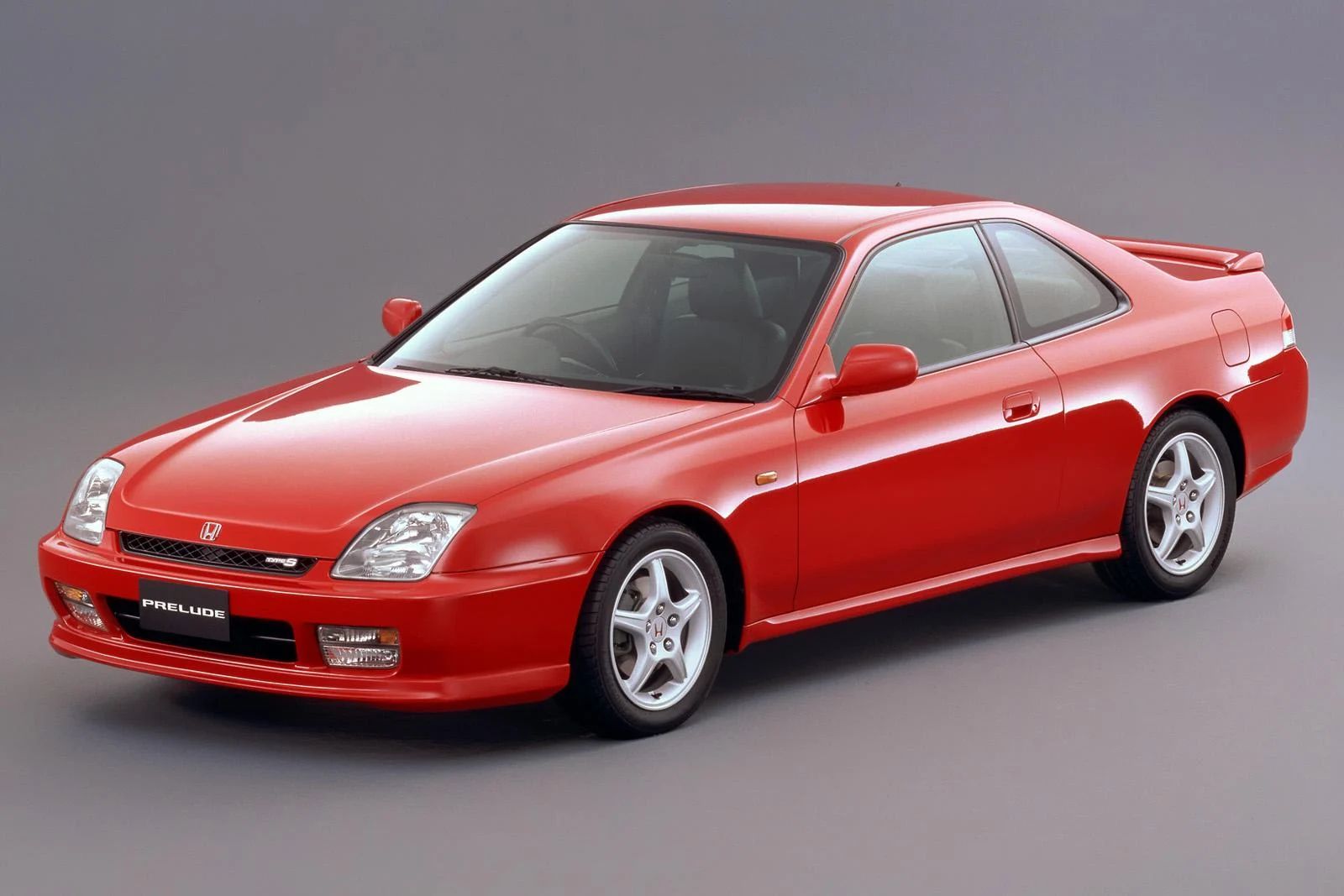
14. **Honda Prelude**The Honda Prelude, first gracing Britain’s roads in 1978 amidst a period of cultural change, arrived as a well-made, well-equipped coupé that delivered surprisingly perky performance. It played a significant role in Honda’s strategic and gradual ascent upmarket, establishing a reputation for quality and enjoyable driving dynamics. For many years, it represented an accessible yet sophisticated sports car, capturing the essence of Honda’s engineering prowess in a stylish package.
Now, some 24 years after the last model was sold in these shores, a new Prelude is dramatically earmarked for a triumphant return by the end of 2025. This highly anticipated revival will see it re-emerge not as a purely internal combustion engine vehicle, but as an advanced hybrid sports car. This strategic pivot underscores Honda’s commitment to hybrid technology as a bridge to a more electrified future, blending traditional performance with enhanced efficiency.
Prospective buyers can expect a price point between £40,000 and £50,000, offering a premium yet compelling package. The new Prelude is set to feature a practical 2+2 seating configuration, ensuring both sporty appeal and everyday usability. True to Honda’s legendary reputation, it will undoubtedly offer exceptional reliability and, crucially, deliver the exhilarating driving thrills that have always been synonymous with the Prelude name. This blend of attributes positions it as a formidable contender in its segment.
Whenever it finally hits the road, automotive enthusiasts can confidently anticipate a sleek and stylish design, meticulously crafted to rival some of the best coupés currently available on the market. The return of the Prelude is a clear signal that Honda is keen to rekindle emotional connections with its heritage, demonstrating that iconic names can successfully adapt and thrive in the era of new energy vehicles, offering a compelling vision of performance and sustainability.
Car Model Information: 2001 Honda Prelude Base 2dr Coupe
Name: Honda Prelude
Caption: 1998 Honda Prelude VTi (BB6) in the UK
Manufacturer: Honda
Production: November 1978 – October 2001,2025–present
Class: Sport compact car
Layout: Front-engine, front-wheel-drive
BodyStyle: liftback,coupe
Assembly: Sayama, Saitama
Predecessor: Honda 1300#Honda 145
Categories: 1980s cars, 1990s cars, 2020s cars, All articles lacking reliable references, All articles needing additional references
Summary: The Honda Prelude (Japanese: ホンダ・プレリュード, Hepburn: Honda Pureryūdo) is a sport compact car produced by the Japanese company Honda. It was produced over five generations from 1978 to 2001, and reintroduced in 2025.
For the first five generations, as a two-door coupe loosely derived from the Accord, the Prelude was the first Honda to feature a moonroof, a feature that remained standard equipment throughout its production.
The Prelude was used by Honda to introduce the Japanese Honda retail sales chain Honda Verno, with the international release of the model following shortly after. The Prelude’s manufacture concluded in 2001 on introduction of the fourth-generation Integra. The Prelude name was originally trademarked by Toyota, but was amicably given to Honda for use.
The Prelude’s nameplate aligned with a series of music-themed nameplates in use by Honda, including the Accord, Quintet, Concerto, Jazz, and Ballade.
Get more information about: Honda Prelude
Buying a high-performing used car >>>
Brand: Honda Model: Prelude
Price: $18,975 Mileage: 38,734 mi.
Read more about: The Future is Now: 12 Groundbreaking Car Models Set to Redefine Driving in the Coming Years

15. **MG Cyberster**The MGB, produced between 1962 and 1980 in both convertible and more practical coupé forms, was an enduring success story for good reason. It was modestly priced, yet offered genuine handling thrills and sophisticated styling typically reserved for far more expensive sports cars. Indeed, it’s often considered the spiritual predecessor to modern roadsters like the Mazda MX-5, embodying a straightforward, driver-focused philosophy that captivated a generation of motoring enthusiasts.
However, the Chinese-owned ‘new’ MG has, perhaps wisely, chosen to steer its electrified Cyberster roadster in a decidedly different direction, particularly given its anticipated price point of around £60,000. Rather than aiming for the lightweight, minimalist ethos of the MGB or MX-5, the Cyberster positions itself as a more opulent, open-top grand tourer. This strategic shift allows it to carve out its own niche in the burgeoning electric performance market, appealing to a different, more luxury-oriented demographic.
The latest MG Cyberster is less a direct successor and more a battery-powered interpretation of a high-performance open-top. It’s designed to compete with vehicles like a Porsche Boxster, boasting a wicked turn of speed and equipped with all the modern conveniences and amenities one would expect from a contemporary grand tourer. Its dramatic scissor doors are an especially attention-grabbing feature, adding a theatrical flair to its already striking design.
While the Cyberster is officially available for order now, many eager customers are still patiently awaiting their keys due to delivery delays. This new flagship model is a powerful statement from MG, showcasing its ambition and technological capabilities in the electric era. It represents a bold redefinition of the brand’s sporting heritage, transforming it into a luxurious, high-performance electric offering that is sure to turn heads and ignite new passions among discerning drivers.
Car Model Information: 1977 MG MGB Roadster
Name: MGB
Caption: 1969 MGB roadster – rollover bar non-standard
Layout: FR layout
Manufacturer: British Motor Corporation,British Leyland,Rover Group
Production: 1962–1980 (original),1992–1995 (MG RV8)
Predecessor: MG MGA
Successor: MG F / MG TF
Class: Sports car
Assembly: Abingdon, Oxfordshire,Enfield, New South Wales,Cowley, Oxford
Categories: 1970s cars, 1980s cars, 1990s cars, All Wikipedia articles written in British English, All articles lacking reliable references
Summary: The MGB is a two-door sports car manufactured and marketed from 1962 until 1980 by the British Motor Corporation (BMC), later the Austin-Morris division of British Leyland, as a four-cylinder, soft-top sports car sold under the MG marque. It was announced and its details first published on 19 September 1962. Variants include the MGB GT three-door 2+2 coupé (1965–1980), the six-cylinder sports car and coupé MGC (1967–1969), and the eight-cylinder 2+2 coupé, the MGB GT V8 (1973–1976).
Replacing the MGA in 1962, production of the MGB and its variants continued until 1980, though fixed roof GT models ceased export to the US in 1974. Sales for the MGB, MGC and MGB GT V8 combined totaled 523,836 cars. After a 12-year hiatus, the MGB re-entered production as the heavily modified MG RV8 with a limited run of 2,000 cars before its final replacement in 1995 by the MG F.
Get more information about: MG MGB
Buying a high-performing used car >>>
Brand: MG Model: MGB
Price: $14,999 Mileage: 70,789 mi.
Read more about: An Unforgettable Reunion: How a Family’s Secret Mission Brought Grandpa’s Beloved 1956 MG Sports Car Back to Life
As we conclude this in-depth look at 15 classic car brands making a modern electric comeback, it’s clear that the automotive world is in the midst of a profound and exhilarating transformation. This isn’t just about replacing combustion engines with electric powertrains; it’s about reimagining legacies, preserving iconic designs, and infusing them with cutting-edge technology to meet the demands of a sustainable future. From high-performance sports cars to versatile urban runabouts, these revivals demonstrate a powerful fusion of nostalgia and innovation. They prove that the soul of classic motoring can thrive in the electric age, offering enthusiasts the best of both worlds: timeless style, reborn with exhilarating, eco-friendly performance. This trend is a testament to the enduring power of automotive design and the boundless possibilities of electrification, ensuring that beloved nameplates continue to captivate and inspire for generations to come.” , “_words_section2”: “2000


